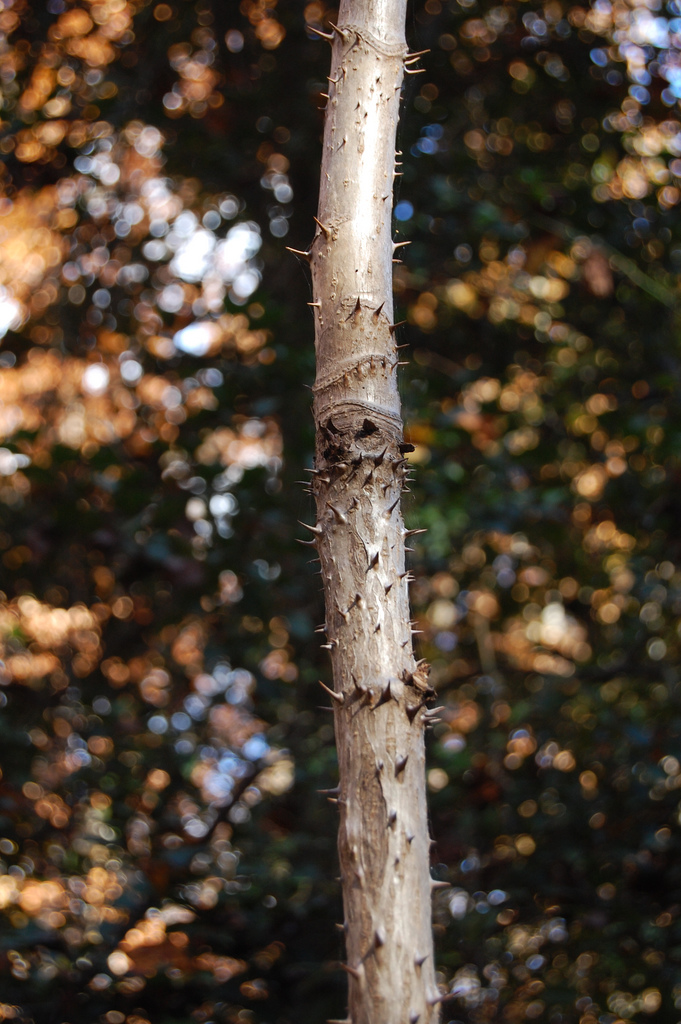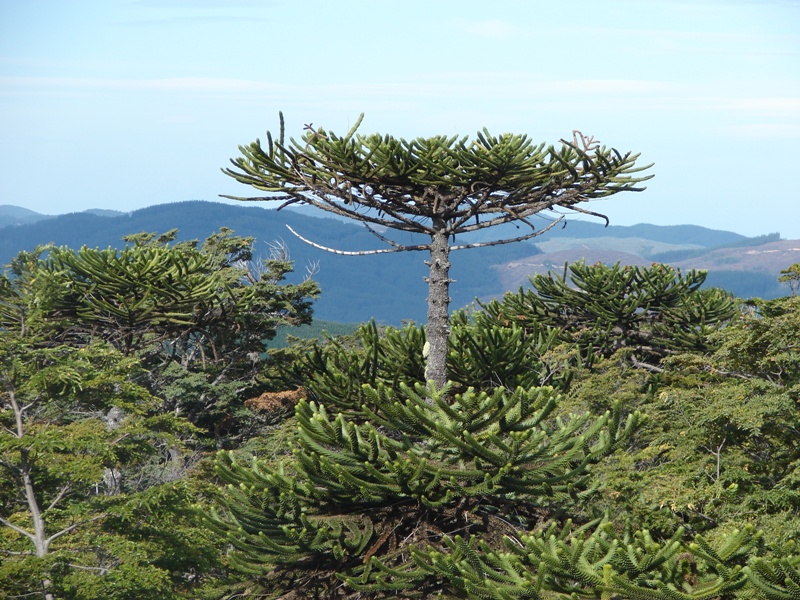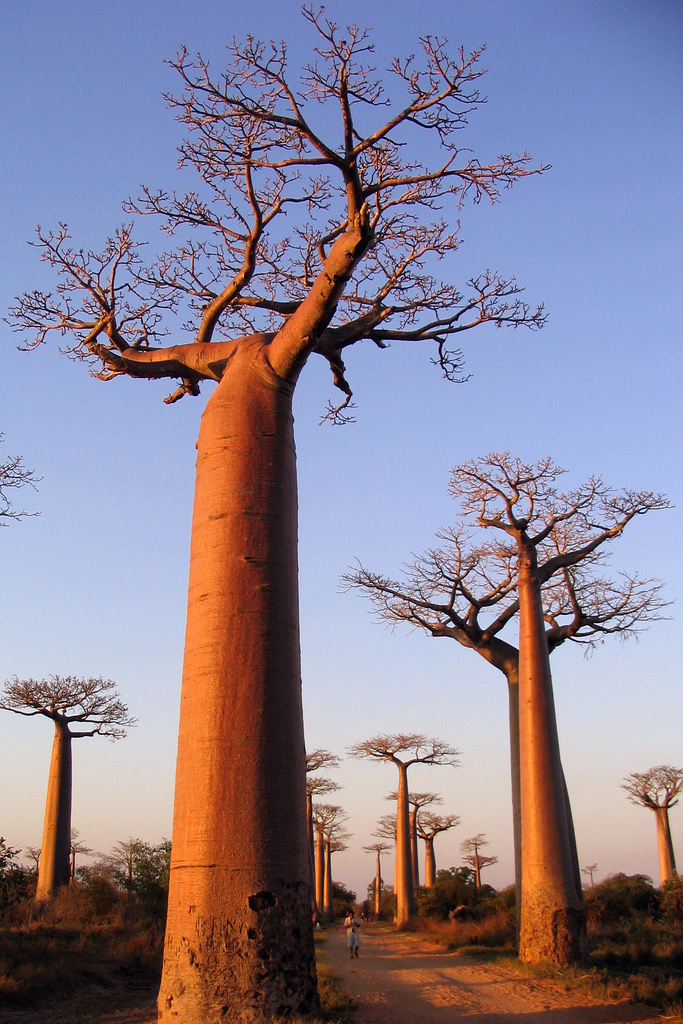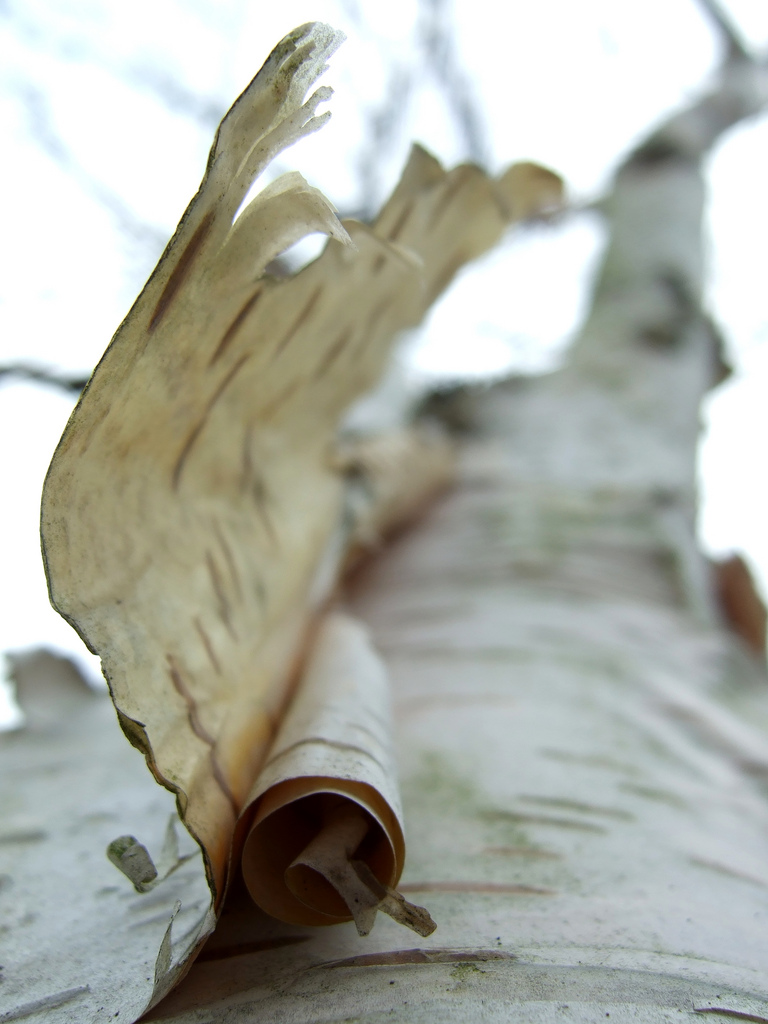By Amelia Loeb, Communications Intern
In this fun list, we’ve highlighted a tree species native to each continent to showcase the beautiful diversity of trees across our planet. Take a look at the science behind how certain trees’ functions have adapted to their environments.
North America
Devil’s Walkingstick
Aralia spinosa
Native to the eastern and southwestern United States
What makes it special? Devil’s Walkingsticks get their name from the thorns protruding from their thin trunk, giving the tree a menacing appearance.
What’s the science? The thorns are specialized stem tissue, evolved to give the plant protection from predators who have a penchant for its black, juicy, berry-shaped fruit. The thorns are either found in a spiral pattern up the truck or in rings, depending on growth rates.
South America
Monkey Puzzle tree
Araucaria araucana
Native to Chile
What makes it special? Well, for starters, it’s the national tree of Chile. Its name comes from an Englishman in the 1800s who said the branches of the tree would puzzle a monkey climbing up it.1 Second, Monkey Puzzle trees are conifers (a tree that has cones) which are uncommon south of the Northern Hemisphere. Third, they can live for a long time; the oldest known species was 700 years old and fossils have dated back 60 million years.
What’s the science? Their irregular shape comes from age-related hormones stimulating different areas of growth. In addition, its thick bark protects the buds which helps the tree withstand wildfires, enabling it to grow for years.
Africa
Baobab
Adansonia digitata
Native to Madagascar and Africa
What makes it special? Well, it’s a massive tree with an uncommon shape. One tree in South Africa has a bar inside with room for 60 people. As to its shape, some have said that it looks like the devil tore the tree up and thrust it back into the ground upside down. This folk legend pulls into question the irregular spreading of branches, and as a side note, why irregularly shaped trees seem to be connected to the devil.
What’s the science? The tissues in the bark are specialized to store massive amounts of water during seasonal droughts. The shape of the branches allow the plant to receive maximum sunlight in its flat terrain.
Europe
Silver birch
Betula pendula
Native to Northern Europe
What makes it special? Its bark peels, called exfoliating bark, giving it a white patterned look. American Forests planted birch trees in Iceland with support of the Icelandic Forestry Association in 2011. This project helped reforest 20 acres and improved soil conditions, which is pretty cool!
What’s the science? Some trees exfoliate their bark in order to save water. In other species it allows a gas exchange necessary for photosynthesis, which then allows the tree to grow quicker. By shedding bark, any lichen growing on the bark, which hamper the light absorption of the photosynthetic bark cells, is sloughed off. The exact reason why silver birch trees have exfoliating bark is unknown.
Asia
Rainbow Eucalyptus (mindanao gum)
Eucalyptus Deglupta
Native to the Philippines and Pacific Asia
What makes it special? Its bark looks like a watercolor painting.
What’s the science? Its bark exfoliates in the summer, revealing streaks of pastel greens, reds, oranges, grey, greyish purples and blues. These colors are created by pigments and are less vibrant when not grown in tropical areas. Their colors are thought to help absorb a wider range of light so that the plant can photosynthesize more.

Australia
Moreton Bay fig
Ficus macrophylla
Native to tropical areas such as parts of Queensland and northern New South Wales
What makes it special? Its buttressed and aerial roots.
What’s the science? Roots that extend from the base of the tree are called buttressed roots. They act as a support so that the plant can grow in the shallow soils of Australia. They’re called buttressed roots because they are reminiscent of the architectural supports.Aerial roots hang in the air to absorb oxygen. This often occurs in species that grow in soils that are dense and don’t have a lot of air space, as in the case for the Moreton Bay fig. Air is essential for roots to absorb nutrients.The roots are also allelopathic, meaning they exude as substance that affects other species. In this case, the roots of the Moreton Bay fig are toxic to many other species of plants so that other plants don’t naturally grow around it.

Antarctica
Most trees cannot grow in Antarctica because of the limited water supply. Plants, such as trees, have a vascular system, similar to humans, which relies on water as a transport. When the temperature is well below freezing, the vascular system cannot conduct water because it has turned to ice. Some plants can withstand the near constant freezing temperatures and lack of water, such as mosses or grasses, but trees cannot. Trees can also survive periods of freezing temperatures by going into dormancy, but not for the majority of the year. Also, trees require an extensive root system to support their height. Since most water is found at the top of the soil, the roots can’t grow deep enough into the dense frozen soil to support a tree. Plants found in frozen tundras are small, like grasses, algea or shrubs, though scientists have found evidence of pollen frozen in ice which hints that the climate may have been warmer.
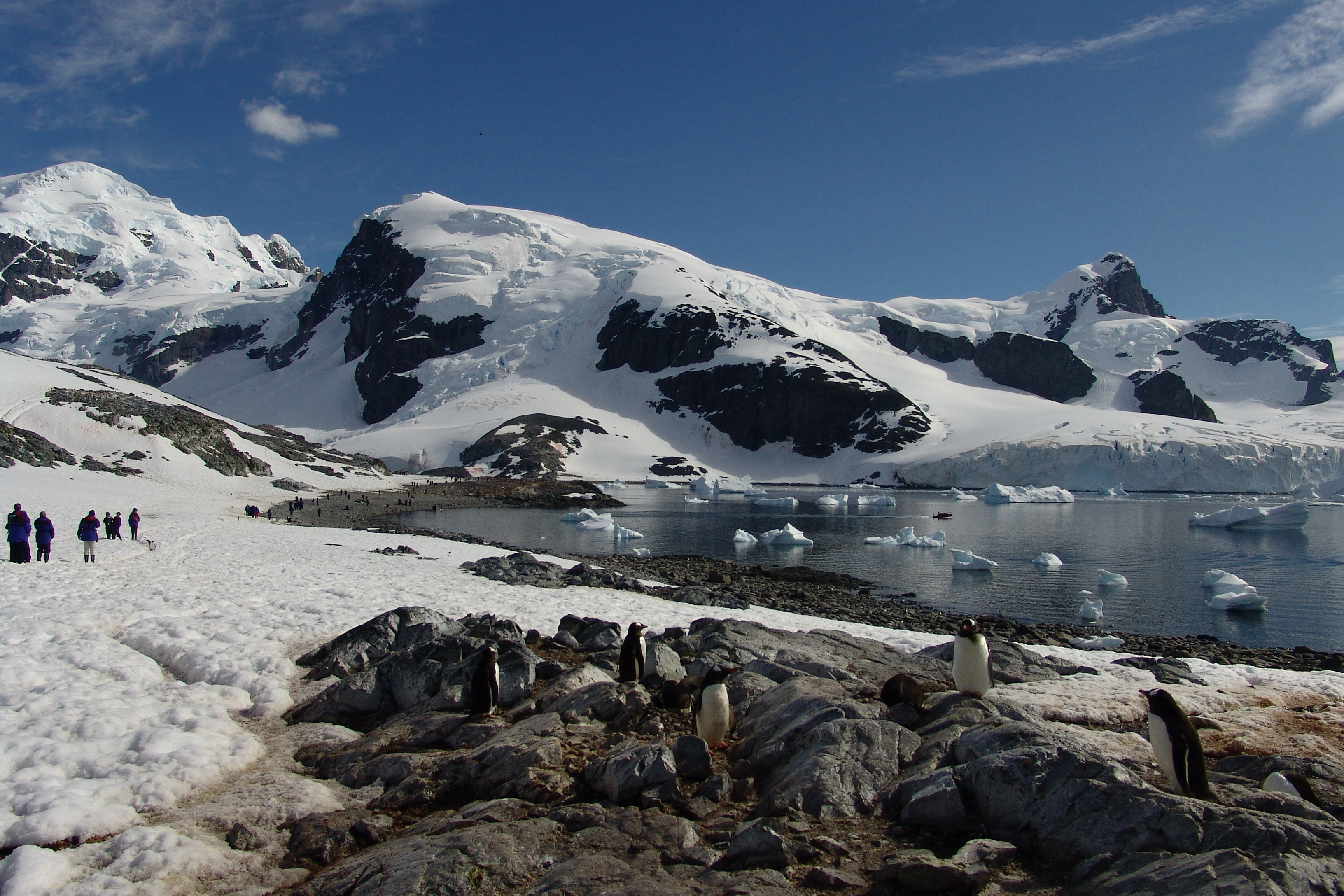
1 Note: Monkeys are not native to Chile, so the metaphor is a factual stretch but fun nonetheless.
